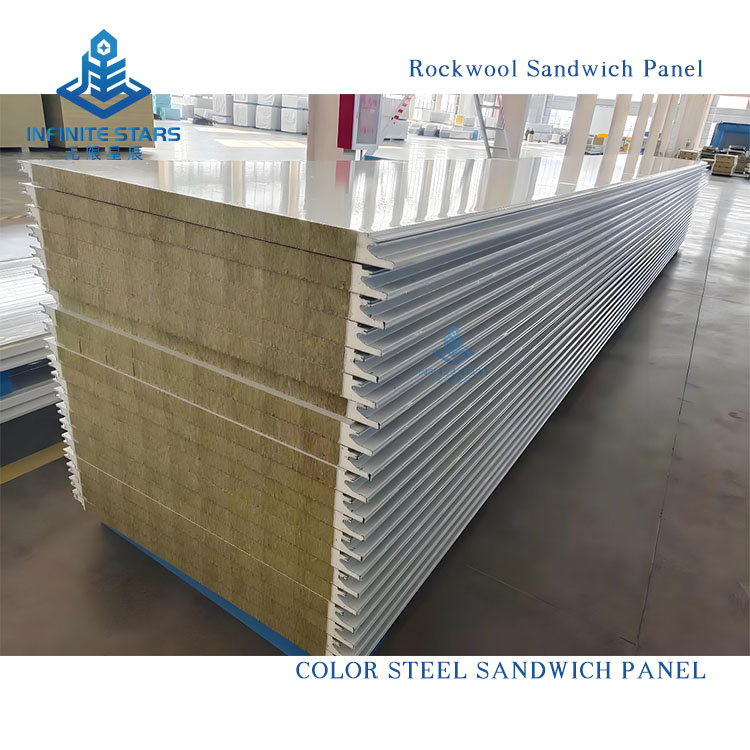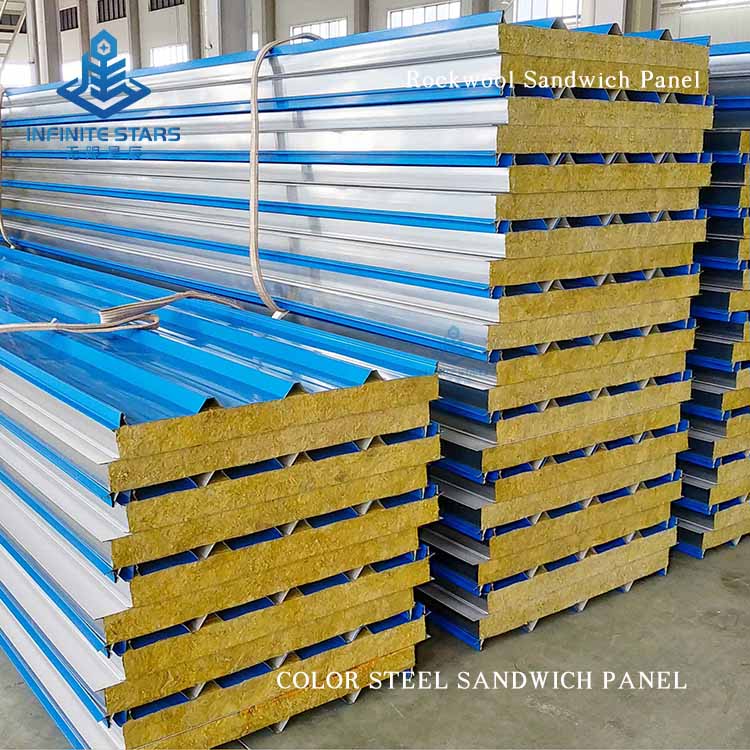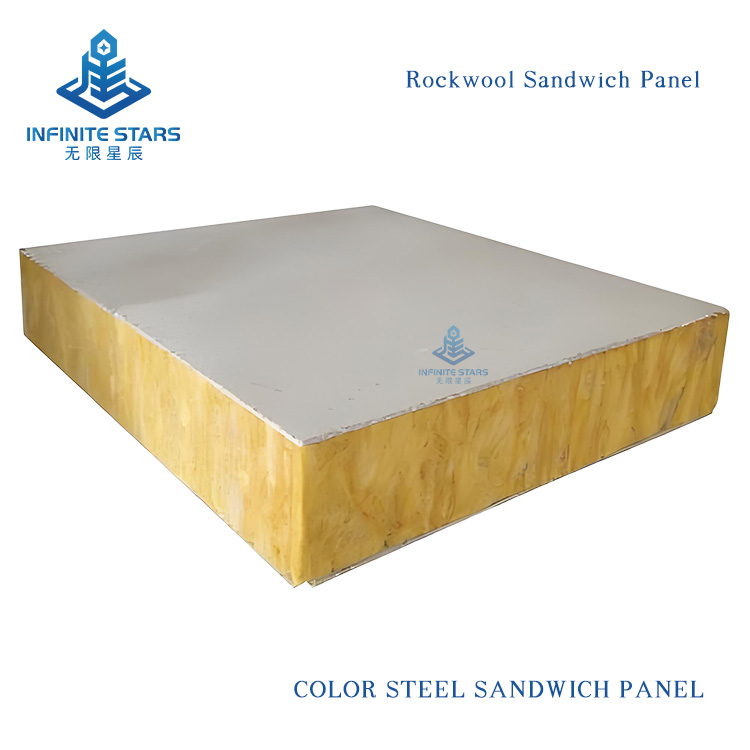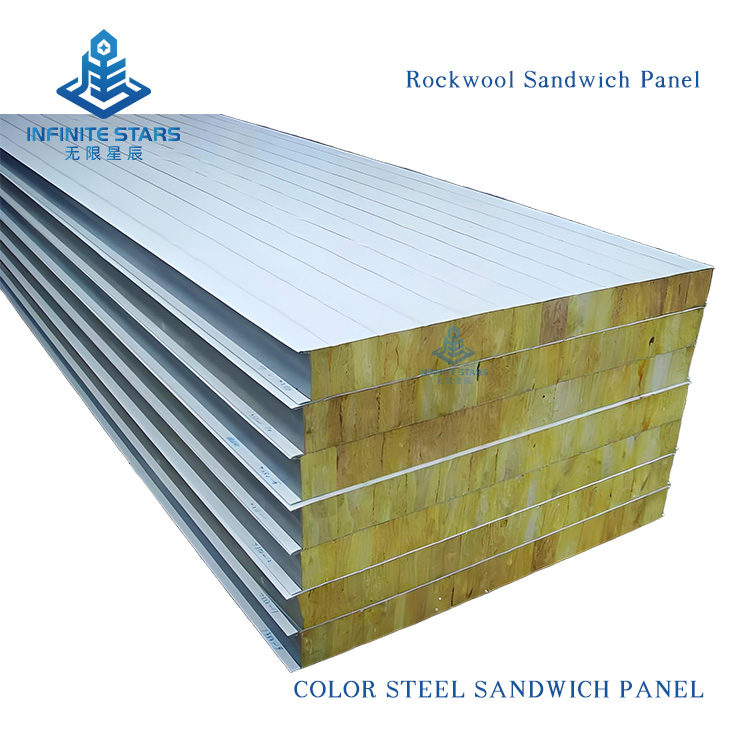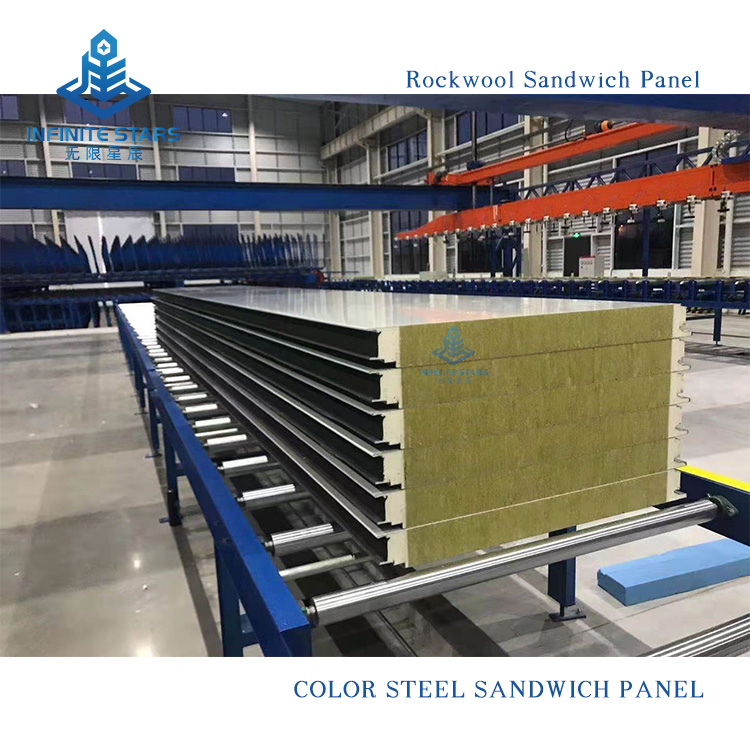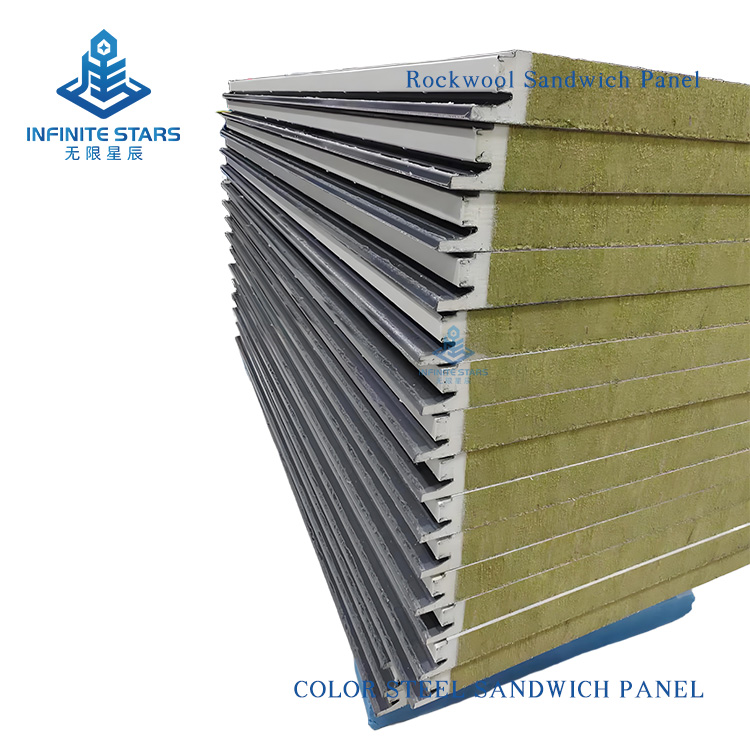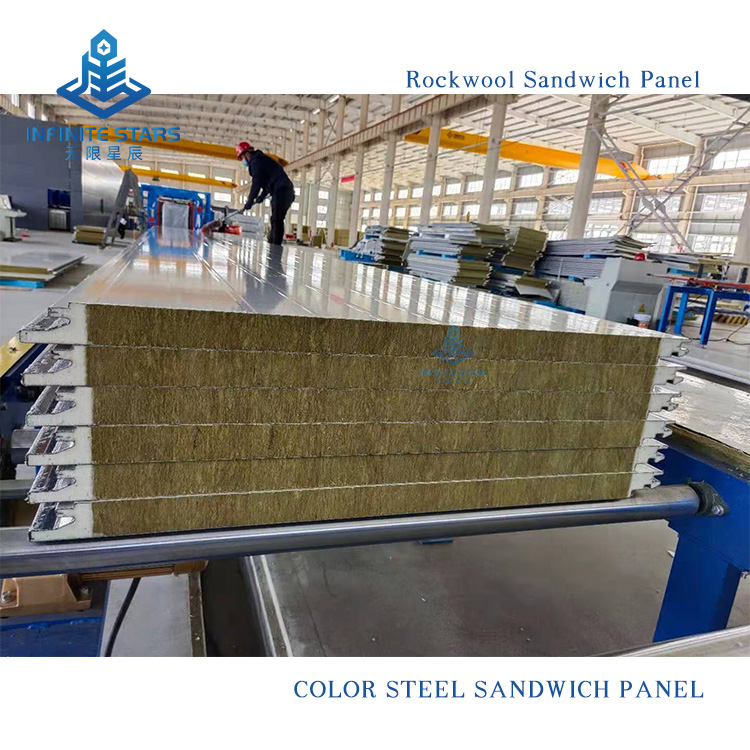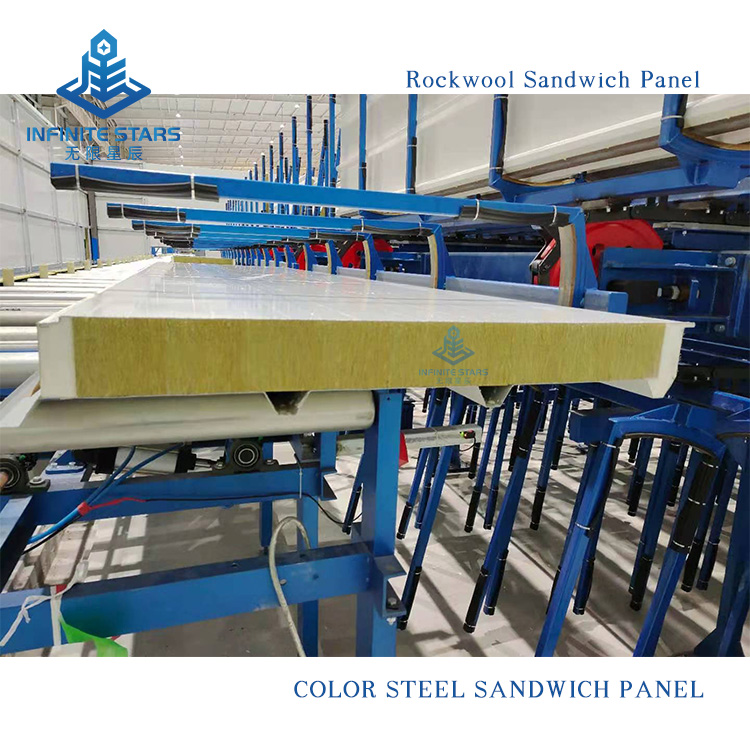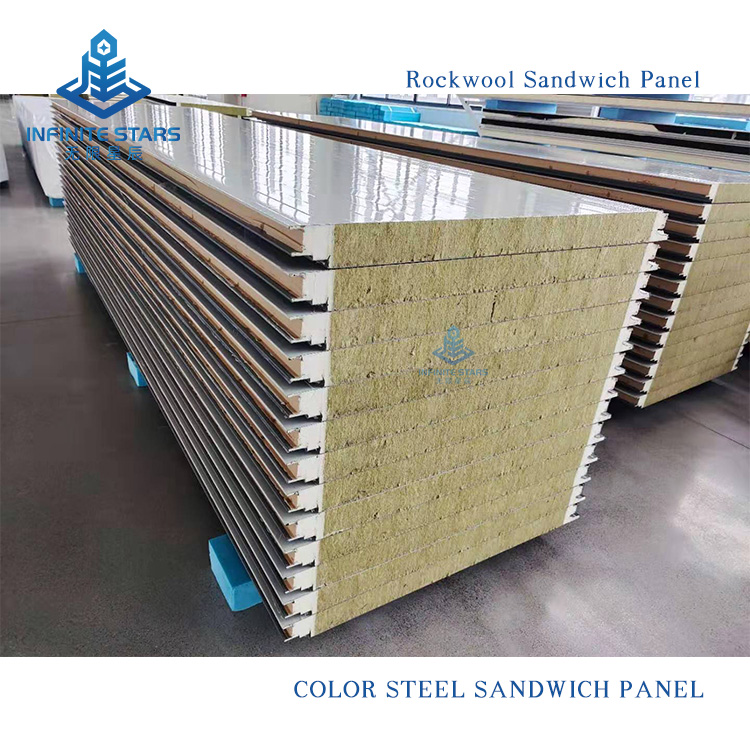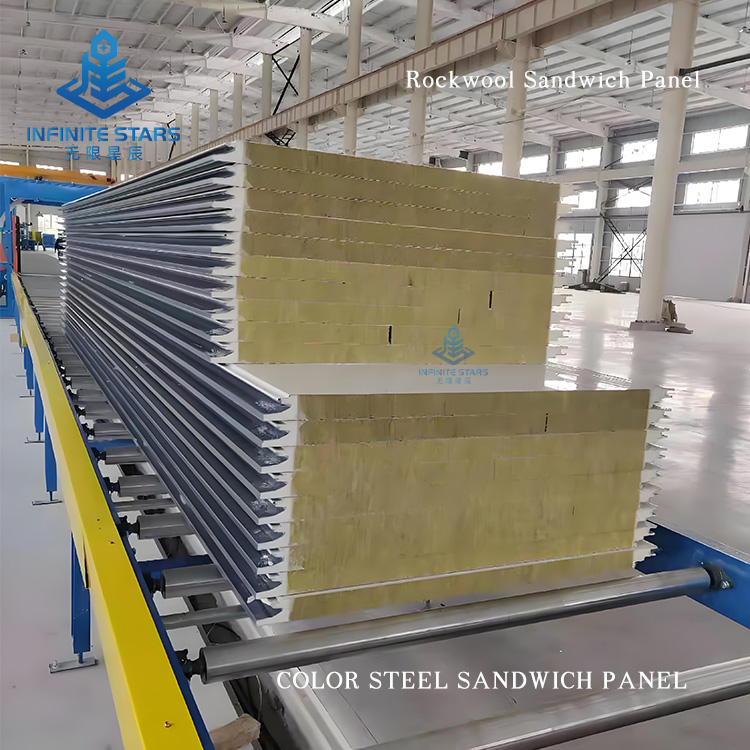100mm Thick Rock Wool Sandwich Panel
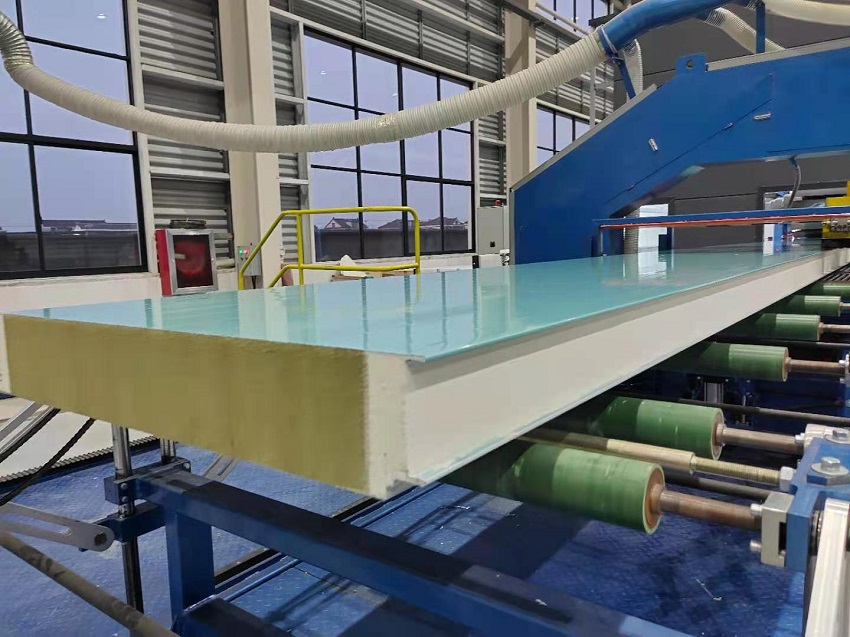
Rock Wool Sandwich Panel Product Introduction
Rock wool sandwich panels are fire-resistant building panels composed of basalt rock wool as the core material, sandwiched between two metal or non-metal facing layers. Known for their excellent fire resistance, sound insulation, and structural stability, they are widely used in industrial plants, commercial buildings, data centers, and other applications with stringent fire safety requirements.
1. Structure and Composition
Facing Materials:
Metal panels: Color-coated steel, galvanized steel, stainless steel, aluminum, etc.
Non-metal panels: Gypsum board, calcium silicate board, cement fiberboard, etc.
Core Material:
Basalt rock wool, made from molten basalt spun into fibers, with a typical density of 80–150 kg/m³.
Some premium products feature hydrophobic rock wool (water-repellent), suitable for humid environments.
Thickness: Standard 50–200 mm, customizable.
2. Key Features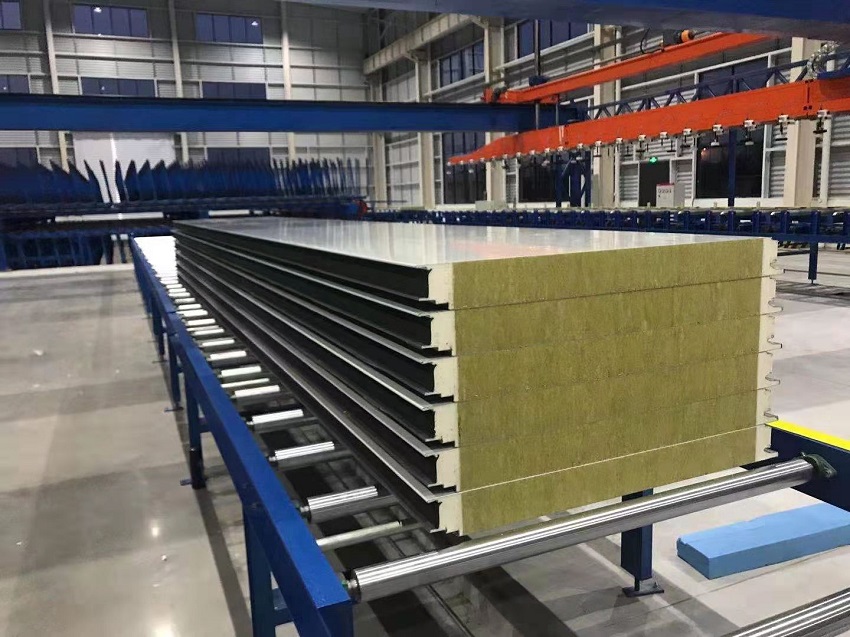
✅ Class A Fire Resistance (Non-combustible, compliant with GB 8624-2012, fire endurance up to 1–4 hours).
✅ Superior Sound Insulation (Fibrous structure effectively absorbs noise, high noise reduction coefficient).
✅ High-Temperature Resistance (Melting point >1000°C, no toxic fumes released under heat).
✅ Water-Repellent & Moisture-Resistant (Some treated panels have <5% water absorption).
✅ Eco-Friendly & Non-Toxic (Asbestos-free, no CFCs, RoHS-compliant).
✅ High Compressive & Flexural Strength (Metal-faced for structural durability, suitable for large-span buildings).
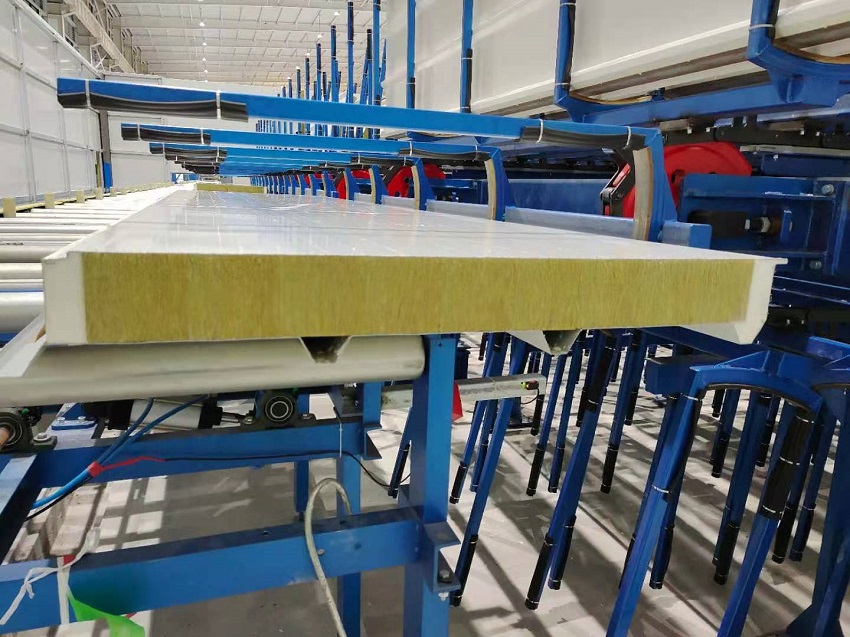
3. Main Types
(1) By Facing Material
Metal-Faced Rock Wool Panels (Most common, e.g., factory walls, roofs).
Non-Metal-Faced Rock Wool Panels (e.g., cleanrooms, fireproof partitions).
(2) By Application
Wall Panels (Vertical installation, reinforced design).
Roof Panels (Waterproof drainage structure, adjustable slope).
Fireproof Partition Panels (For firewalls, explosion-proof zones).
4. Applications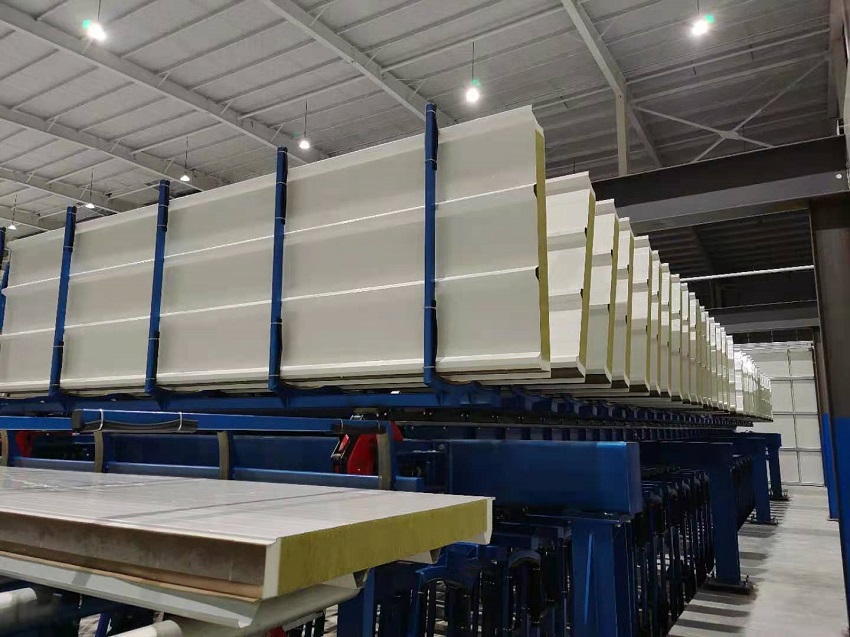
? Industrial Buildings: Chemical plants, power stations, warehouses (high fire/explosion resistance needs).
? Public Buildings: Hospitals, schools, high-speed rail stations (Class A fireproof requirements).
❄️ Cold Chain Logistics: Cold storage (thermal insulation + fireproofing).
? Acoustic Engineering: Recording studios, cinemas (excellent soundproofing).
? Temporary Structures: Construction site cabins, fire escape routes (quick installation + fire safety).
5. Advantages vs. Other Sandwich Panels
| Feature | Rock Wool Panel | PU Panel | EPS Panel |
|---|---|---|---|
| Fire Rating | Class A Non-Combustible | B1 Flame-Retardant | B3 Flammable |
| Thermal Insulation | Moderate (better than fiberglass) | Best | Average |
| Sound Insulation | Best | Moderate | Poor |
| Heat Resistance | >1000°C | ~120°C (softens) | ~80°C (melts) |
| Eco-Friendliness | Non-toxic, recyclable | May contain blowing agents | Toxic fumes when burned |
| Cost | Medium-high | High | Lowest |
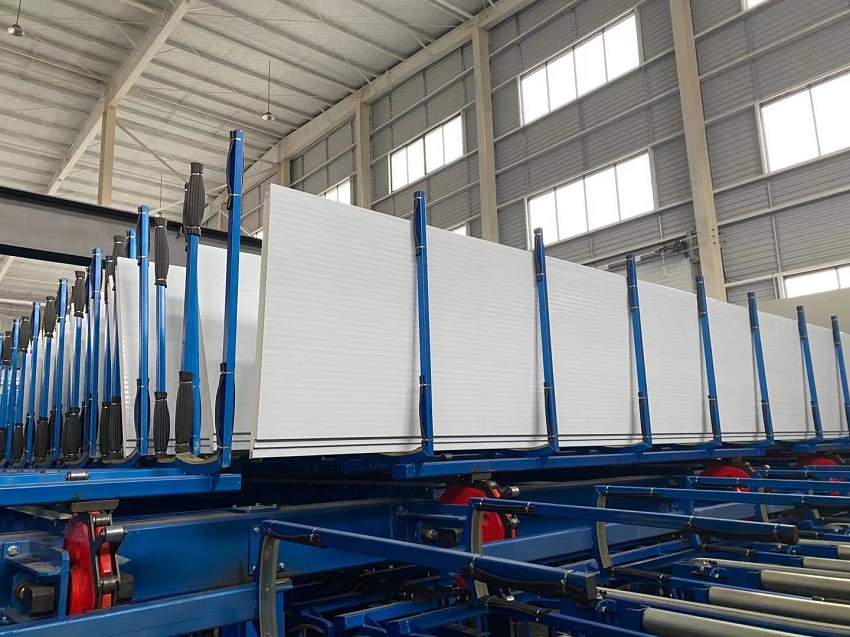
6. Purchasing Considerations
⚠️ Fire Certification: Must comply with GB 8624 Class A.
⚠️ Core Density: Recommended ≥100 kg/m³ (low-density rock wool may sag over time).
⚠️ Panel Corrosion Resistance: Choose aluminum-zinc-coated or PVDF-coated panels for coastal/humid areas.
⚠️ Installation Method: Requires specialized frames/fasteners to prevent thermal bridging.
Conclusion
Rock wool sandwich panels are the top choice for high fire-safety applications, especially industrial plants, public buildings, and high-noise environments. While their thermal insulation is slightly inferior to PU panels, their Class A fireproofing + superior soundproofing make them irreplaceable in specific fields. When selecting, prioritize density, water repellency, and panel durability for long-term performance.










